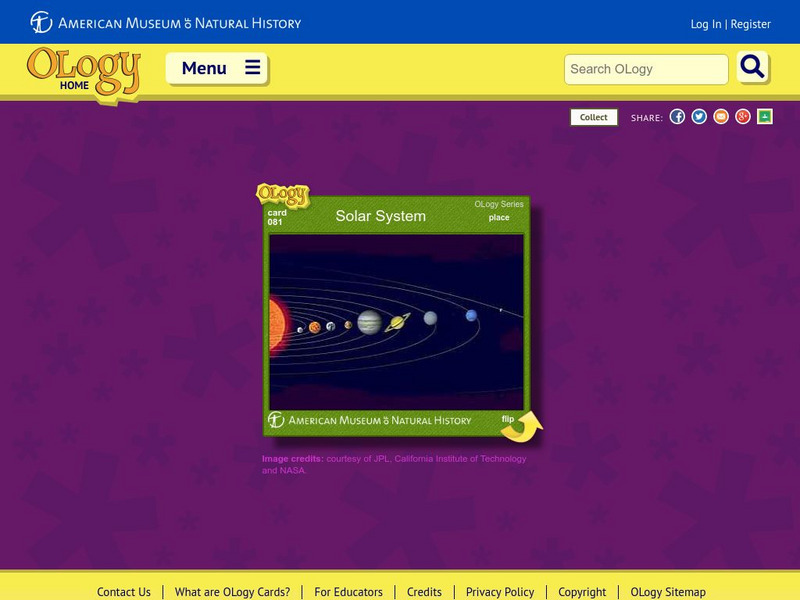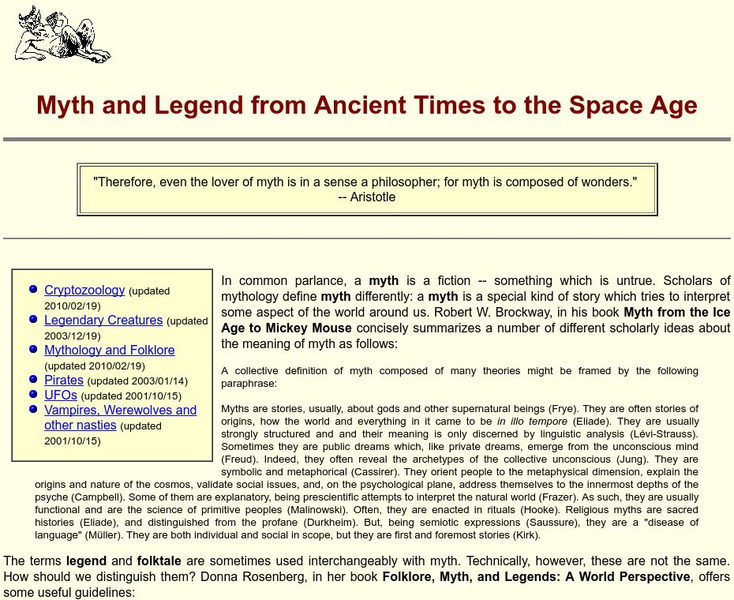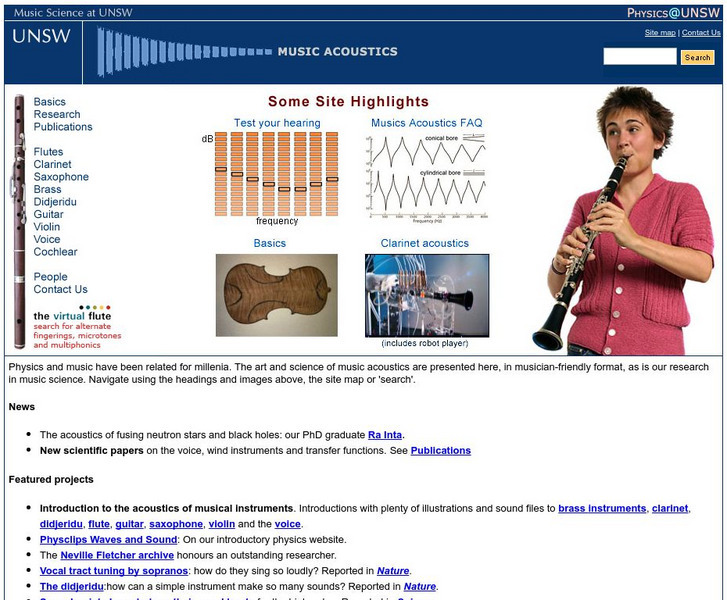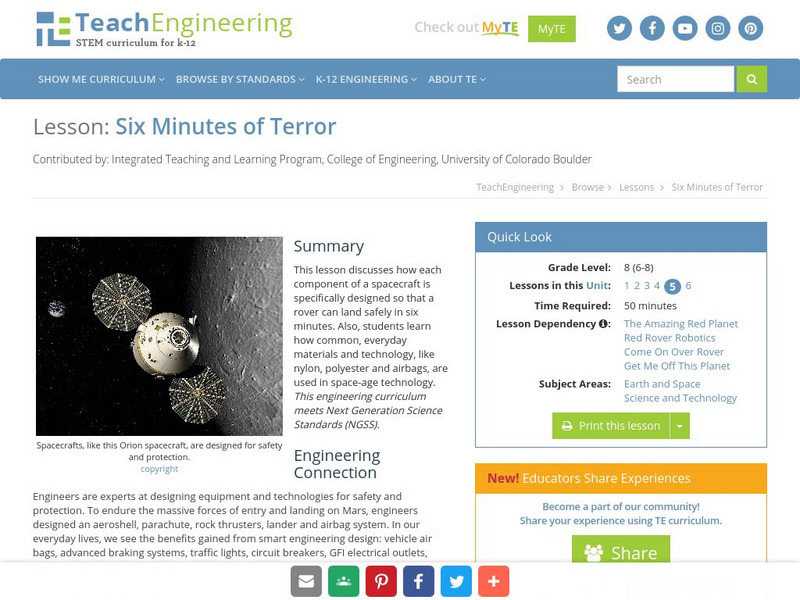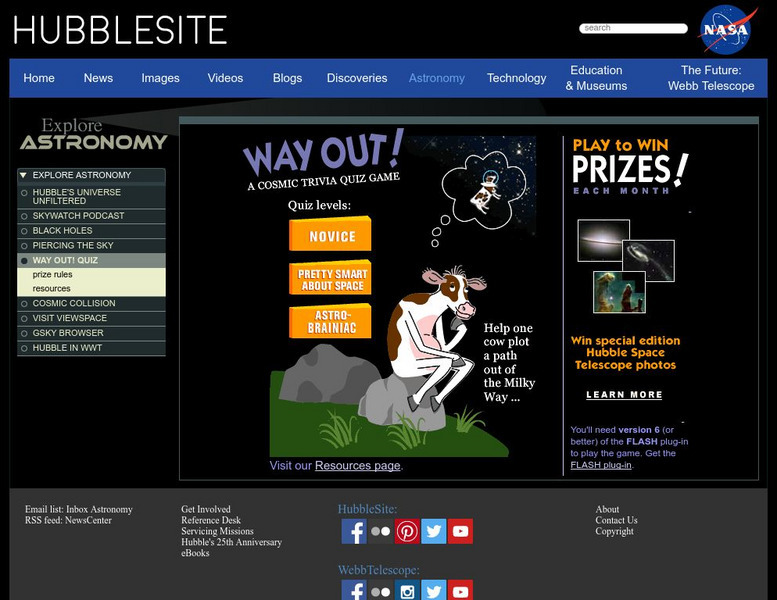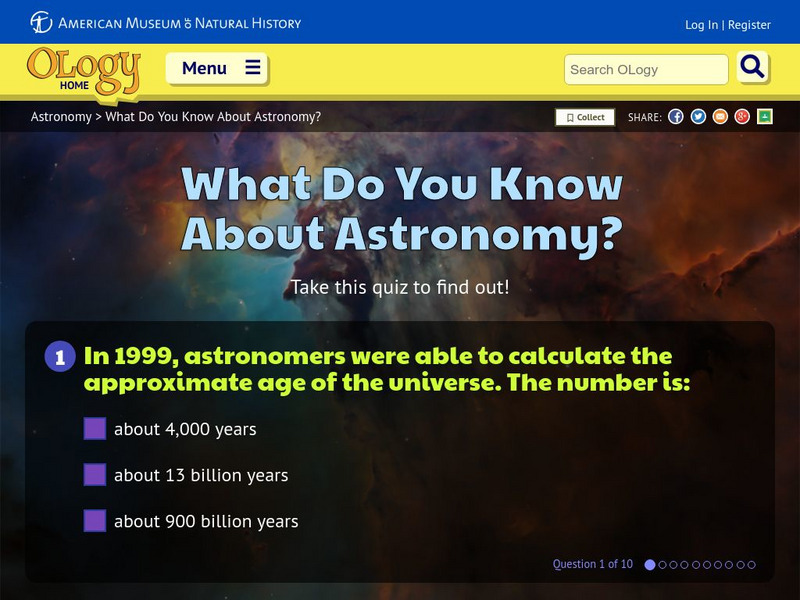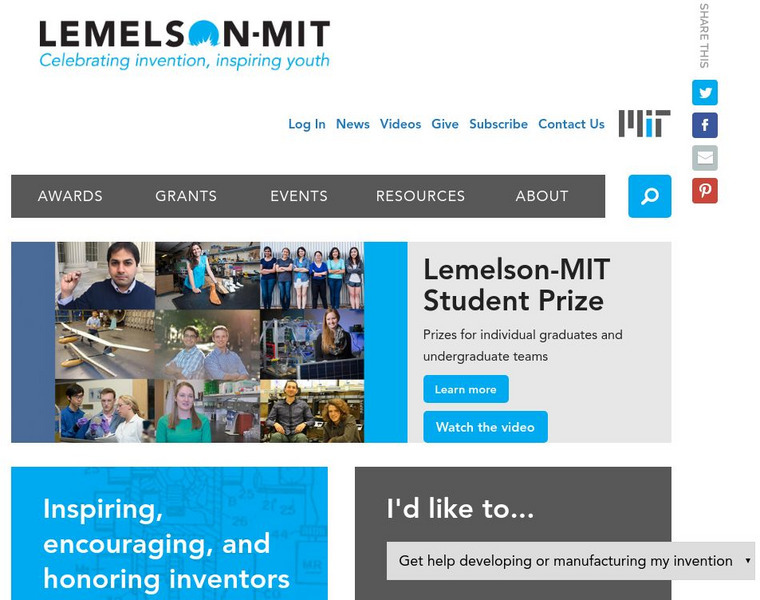PBS
Pbs Learning: Donkey Hodie: Purple Panda's Space Bop
Students follow directions to navigate to the Purple Planet.
Read Works
Read Works: Fossils & Dinosaurs: The Age of Dinosaurs
[Free Registration/Login Required] This nonfiction passage describes the time period when dinosaurs were still living on earth and describes the event that caused the extinction of the dinosaurs.This passage is a stand-alone curricular...
American Museum of Natural History
American Museum of Natural History: Solar System O Logy Card
Here's an Ology Card about the Solar System, offering a small image, a definition, and information on how "far out" our Solar System is. Includes questions to quiz your knowledge and quick facts about the Solar System's size, rotation...
Annenberg Foundation
Annenberg Learner: Earth and Space Science: Restless Landscapes
Material to begin an exploration of the sand formation, landforms, and underground water. An hour-long video is accompanied by learning goals, an outline and overview, details on the ice ages, glaciers, and glacial landforms, and ideas...
Smithsonian Institution
National Air and Space Museum: Explore the Universe
This resource explores the history of the universe and its explorers.
Other
Myth and Legend From Ancient Times to the Space Age
Is there a difference between myth and legend? This site seeks to define both and point out the differences between the two. Also has a "time line" showing development of myths from ancient times to present day. Extensive information.
Other
Northrop Grumman Corporation: Into the Unknown: Resources
The Northrop Grumman Corporation provides numerous resource about outer space and beyond.
Other
Historic Wings: John Glenn Friendship 7
The story of America's first astronaut to orbit the earth during the Mercury Space program. After launching the program click on continue or on the numbers to learn about the story of the Mercury program and the first American to orbit...
University of New South Wales (Australia)
University of New South Wales: Music Acoustics
Learn about the science of music acoustics. Topics such as how do violins change with age and brass acoustics are explored through scientific research.
NASA
Nasa: Imagine the Universe: Supernovae Remnants
A brief description of supernova remnants with many embedded links to help define terms used in the description. The specific topics are age and the importance of remnants to us and the types. Definitions of key words are provided.
Instituto Latinoamericano de la Comunicacion Educativa
La Ciencia Para Todos: Ciencias De La Tierra
In this site you will find several topics about our planet Earth: remote perception from space, earthquakes and the structure, age and composition of our planet Earth.
NASA
Nasa: Space Place: How Old Are Galaxies?
Learn about galaxies: How old are they? How can we study things so far away? What is the most distant galaxy? What can we learn by studying distant galaxies?
Curated OER
Npr: Sputnik at 50: Looking Back at the Space Race
The Soviets were surprised at the world's reaction to their accomplishment. Little did they know that they had thrust the world into the Space Age. NPR supplies historic facts, thoughts of people involved, and information on the impact...
Curated OER
Npr: Sputnik at 50: Looking Back at the Space Race
The Soviets were surprised at the world's reaction to their accomplishment. Little did they know that they had thrust the world into the Space Age. NPR supplies historic facts, thoughts of people involved, and information on the impact...
Curated OER
Npr: Sputnik at 50: Looking Back at the Space Race
The Soviets were surprised at the world's reaction to their accomplishment. Little did they know that they had thrust the world into the Space Age. NPR supplies historic facts, thoughts of people involved, and information on the impact...
TeachEngineering
Teach Engineering: Six Minutes of Terror
This lesson discusses how each component of a spacecraft is specifically designed so that a rover can land safely in six minutes. Also, students will learn how common, everyday materials and technology, like nylon, polyester and airbags,...
National High Magnetic Field Laboratory
Magnet Academy: Maglev Trains 1984
The railroad industry began in the frontier days, magnetic levitation has moved it squarely into the space age.
Space Telescope Science Institute
Hubble Site: Way Out!
Can you help a cow plot a path out of the Milky Way? This hilarious space game is for all ages and is offered by HubbleSite. Users may pick their level of expertise and can choose from novice, pretty smart about space, or an astrobrainiac.
Computer History Museum
Computer History Museum: Model 7094 Console
Brief description of the Model 7094 Console, a transistor computer used in the NASA Apollo space program. The machine is on display at the Computer History Museum. This site provides a glimpse into the development of the information age...
American Museum of Natural History
American Museum of Natural History: O Logy: What Do You Know? Astronomy
Take this ten-question self-scoring quiz to test your knowledge of astronomy facts: age of the universe, why stars and planets are spheres, where other life might exist in the outer space, the Milky Way, and more.
Other
Usc Leonard Davis: Morton Kesten Universal Design Competition
The annual Morton Kesten Universal Design Competition, a program of the USC Leonard Davis School of Gerontology, encourages student designers from across the U.S. to design products and spaces for people of all ages and abilities using...
NASA
Nasa: Educator Features and Articles
K-12 educational articles, lesson plans, and other teaching materials on current NASA projects that meet national education standards. NASA generates awareness of students' interest in space, science, mathematics, geography, and...
NASA
Nasa: Educator Features and Articles
K-12 educational articles, lesson plans, and other teaching materials on current NASA projects that meet national education standards. NASA generates awareness of students' interest in space, science, mathematics, geography, and...
Massachusetts Institute of Technology
Mit: Inventor of the Week: Robert H. Goddard
This brief article overviews the contributions Robert H. Goddard made to the development of liquid-fueled rockets.


